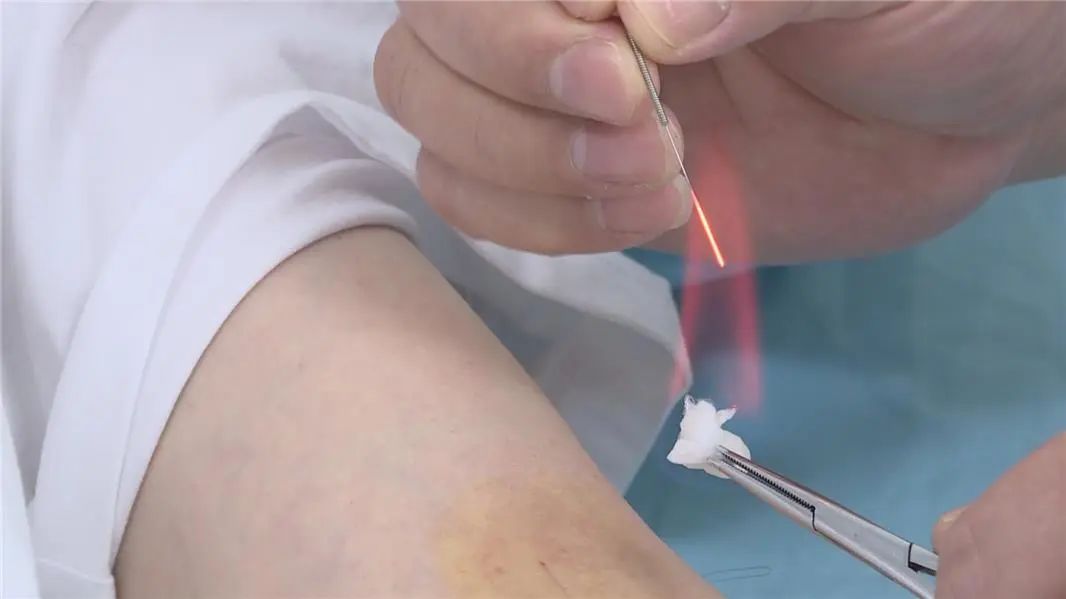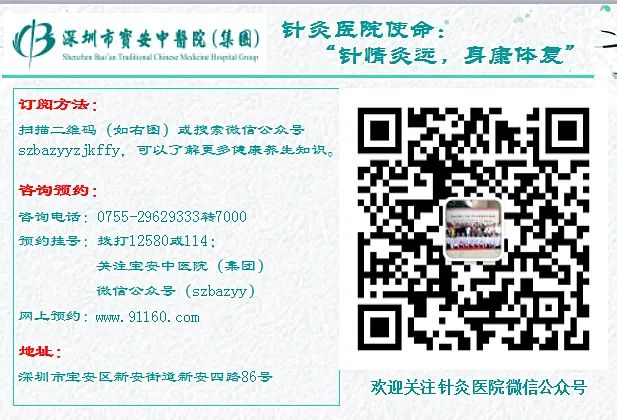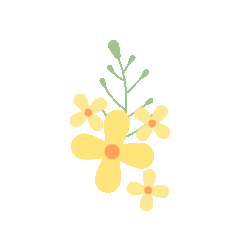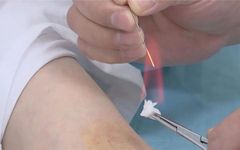 Acupuncture and Moxibustion— Moxibustion Needle Therapy
Acupuncture and Moxibustion— Moxibustion Needle Therapy
The moxibustion needle therapy involves using specially designed needles that are heated until red hot and then inserted into acupoints (腧穴, shùxué) or affected areas to expel pathogenic factors and treat diseases. The earliest mention of moxibustion needles can be found in the Huangdi Neijing (黄帝内经), referred to as “burning needles” (燔针, fánzhēn) or “quenched needles” (焠刺, cuàncì). The moxibustion needle (毫火针, háohuǒzhēn) is developed based on the moxibustion needle, enhancing its functions and extending its applications. Typically, a needle with a length of 25mm and a diameter of 0.3mm to 0.35mm is used, characterized by a fine needle body, rapid heating, and minimal pain. After needle removal, there is little bleeding and a low risk of infection. In clinical practice, moxibustion needles carry a strong fire energy; thicker needles can cause more pain, while finer needles may be less effective. The moxibustion needle combines the advantages of both types, utilizing both moxibustion and acupuncture techniques to create a dual effect of heat and needling, achieving the effects of unblocking meridians (经络, jīngluò), promoting qi and blood circulation (气血, qìxuè), warming yang and dispelling cold (温阳散寒, wēnyáng sànhán), thus adjusting the dynamic balance of yin and yang in the body to treat diseases.

Indications
Neurological disorders, such as postherpetic neuralgia, trigeminal neuralgia, occipital neuralgia, post-stroke sequelae, and facial neuritis;
Various soft tissue pains, such as tennis elbow, tenosynovitis, shoulder periarthritis, piriformis syndrome, acute lumbar sprain, and ankle sprain;
Degenerative bone and joint diseases, such as cervical spondylosis, knee osteoarthritis, lumbar osteoarthritis, lumbar disc herniation, and lumbar spinal stenosis;
Rheumatic and autoimmune diseases, such as rheumatoid arthritis, ankylosing spondylitis, dense bone inflammation, and juvenile spondyloarthritis;
Spinal-related diseases, such as chronic bronchitis, functional arrhythmia, chronic gastritis, irregular menstruation, and chronic fatigue syndrome;
Some internal medicine, male and female gynecological diseases, such as insomnia, headache, cough, asthma, palpitations, constipation, diarrhea, impotence, dysmenorrhea, and infertility.
Precautions
Before moxibustion needle therapy, patients should accurately inform their health status. Caution is advised for patients with diabetes, coronary heart disease, tumors, liver and kidney dysfunction, and bleeding disorders; those with mental illnesses or excessive mental stress; elderly individuals with weak constitutions, pregnant women, children, and those with scar constitutions.
After moxibustion needle therapy, strict adherence to care instructions is required. Generally, avoid water contact for 12 hours, keep the needle site clean and dry to prevent infection; if pain occurs at the needle site after treatment, follow medical advice for heat application and topical medications, and avoid heavy lifting and intense exercise. If there is any leakage, bleeding, or pus at the needle site, seek medical attention or consult a specialist.
Pain Management Department Overview
The Pain Management Department of Baoan Traditional Chinese Medicine Hospital (Group) is a specialized department that integrates traditional Chinese medicine therapies with modern minimally invasive interventional techniques (such as radiofrequency coagulation and nerve block) to diagnose and treat various acute, chronic, complex, and stubborn pain conditions.
 Pain Management Expert Introduction
Pain Management Expert Introduction

Dr. Hu Lingsan, Associate Chief Physician, Doctor of Medicine, a high-level talent in Baoan District, Shenzhen, graduated from Shanghai University of Traditional Chinese Medicine, and is the sixth-generation academic inheritor of the national intangible cultural heritage project “Shishi Trauma Treatment” and the fifth-generation academic inheritor of the Guangdong Province intangible cultural heritage project “Musculoskeletal Treatment Method.” Currently, he serves as a standing committee member of the Bone Injury Rehabilitation Branch of the Chinese Association of Traditional Chinese Medicine, a member of the Minimally Invasive Acupuncture Committee of the Chinese Acupuncture Society, a member of the Manipulation Branch of the Chinese Association of Traditional Chinese Medicine, a youth member of the Bone Injury Drug Branch of the Chinese Herbal Medicine Association, and a standing committee member of the Pain Committee of the Shenzhen Association of Integrative Medicine. He has received over ten honors at provincial and municipal levels, such as “Outstanding Communist Party Member,” “Advanced Individual in Epidemic Prevention,” and “Young Expert in Orthopedic Specialty Therapy.” He has participated in (or led) six national and provincial-level projects and published over 20 academic papers, holds two utility model patents, and co-authored two academic monographs. Specialty: Skilled in using traditional Chinese minimally invasive techniques to treat various chronic pain conditions, advocating a comprehensive strategy of “differentiating body, disease, syndrome, and structure” in treating chronic diseases.

 END
END
Author: Dr. Hu Lingsan
Warm Reminder
Due to the location of the acupuncture hospital of Baoan Traditional Chinese Medicine Hospital (Group) on a hillside and the recent continuous heavy rain, in order to ensure safety, the acupuncture hospital is currently suspending medical services. Medical staff will continue to provide services at the main hospital, and citizens in need can visit the outpatient departments of acupuncture and pain management at the main hospital for consultation and treatment; the resumption of services at the acupuncture hospital will be announced separately.

